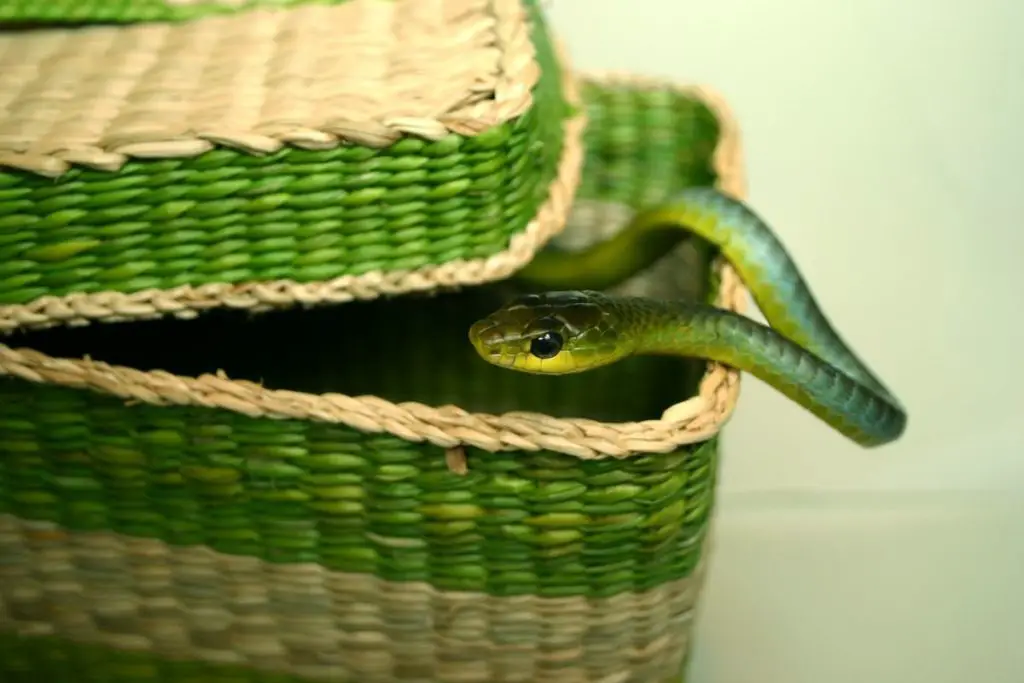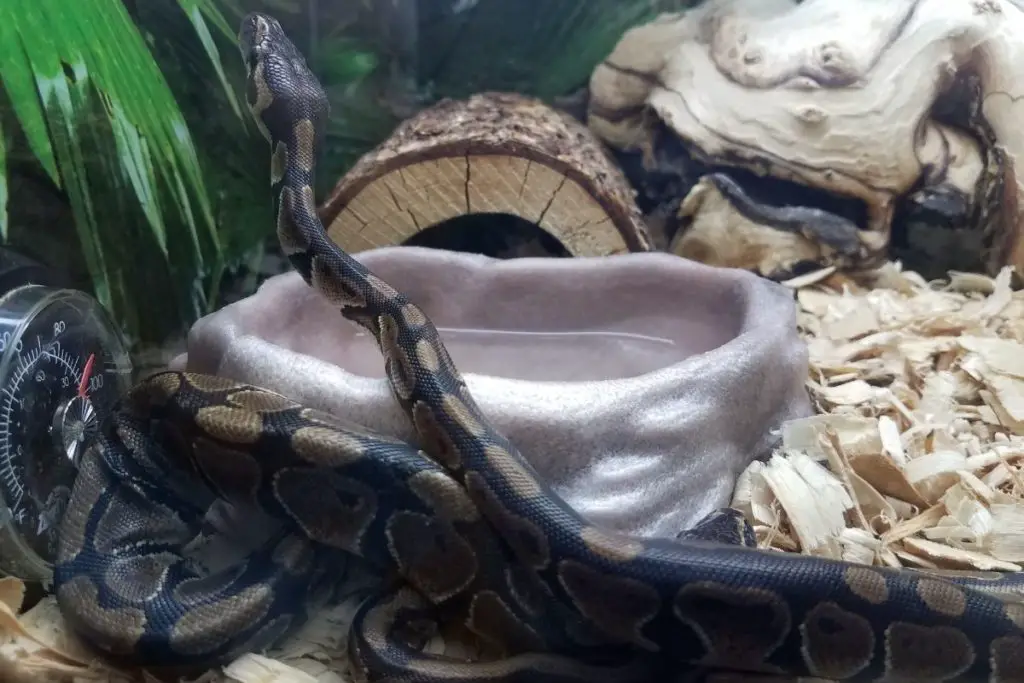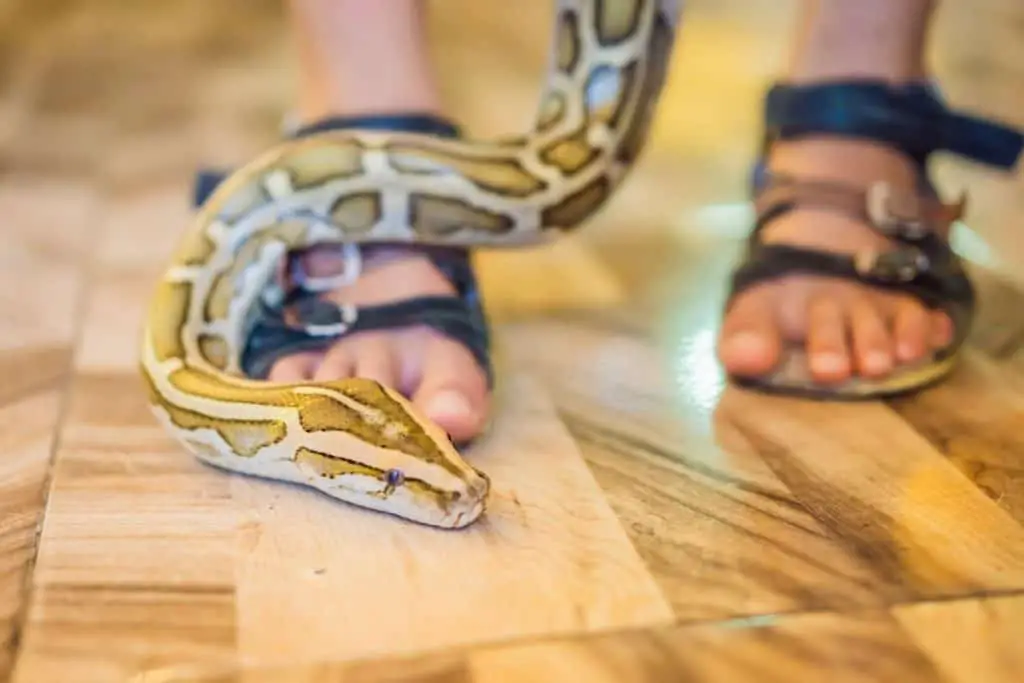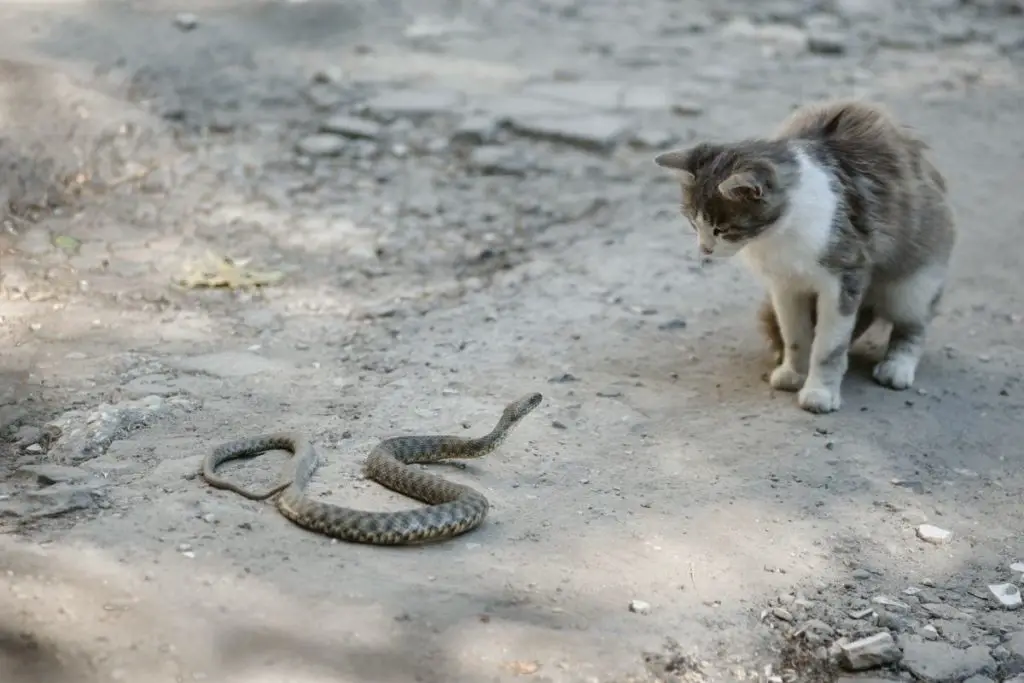I have a snake and I’ve been trying to figure out why it keeps trying to escape. It’s not as if there’s anything outside that would be better than what is inside the tank. After some research, I was able to find out all the reasons that could explain it.
So, why does my snake keep trying to escape? Your snake is trying to escape because it’s not feeling comfortable or safe in its enclosure or it’s trying to find a mate, this could be one of the following: the temperature isn’t right, you are overhandling them, or their habitat is dirty, too small, doesn’t have good hiding places.
To understand why your snake may be trying to escape, we need to narrow it down, so stick around and keep reading as I explore each of these reasons and how you can solve it.
Contents
Why Does Your Snake Keep Trying to Escape?

Let’s go over each of the reasons your snake may be trying to escape and see how you can fix it. This list is not in any kind of
The temperature in the enclosure isn’t right for them
One of the most frequent reasons for your snake to want to flee is that the temperature and humidity in its tank are incorrect.
If you don’t have a temperature gradient in your snake’s tank, they may try to get away. They won’t be able to control their body temperature and might perish from the heat or cold if there is no temperature gradient in their tank.
If your snake is climbing the tank’s side, it might be attempting to escape from the heat generated by the substrate if you’ve set up a heat mat beneath the tank.
This is doubly so if you don’t stick to strict temperature restrictions and a rigid temperature difference.
A too high or low humidity may be deadly to your snake since it might cause respiratory problems and even kill it if the environment is too humid. When snakes need to shed, having a deficiency of humidity can be harmful.
We’ve also included a table with some of the most popular pet snakes and their optimal temperatures. It should be noted that none of these temperatures are guaranteed to give your snake all of its necessary necessities, but it will at least improve on any less-than-ideal conditions.
Temperature Levels Need for Popular Snakes
| Snake | Recommended Temperature |
|---|---|
| Ball Python | – Ambient: 80-90°F (27-32°C) – Basking spot: 95-104°F (35-40°C) |
| Corn Snake | – Ambient: 78-82°F (25-27°C) – Basking spot: 90°F (32°C) |
| California Kingsnake | – Ambient: 80-84°F (27-29°C) – Basking spot: 85-88°F (29-31°C) |
| Western Hognose Snake | – Ambient: 75-85°F (24-29°C) – Basking spot: 90-95°F (32-35°C) |
| Garter Snake | – Ambient: 75-85°F (24-29°C) – Basking spot: 85-88°F (29-31°C) |
| Milk Snake | – Ambient: 75-85°F (24-29°C) – Basking spot: 88-92°F (31-33°C) |
| Children’s Python | – Ambient: 78-85°F (25-29°C) – Basking spot: 85-90°F (29-32°C) |
The Humidity in the enclosure isn’t right for them
Just like with the temperature, if the humidity in your snake’s tank is not correct, it will want to escape. Too little humidity can cause shedding problems and could potentially be deadly if your snake doesn’t have access to water.
A lack of humidity also dries out a snake’s skin, leading to dehydration and scale loss.
In the wild, snakes often live near bodies of water where the humidity is high. This allows them to drink and absorb moisture through their skin as they bask in the sun.
If you’re having problems getting your snake to eat, it might be a sign that the humidity is too low. When snakes are stressed or dehydrated, they’re more likely to stop eating.
In the wild, snakes have a high humidity level that is about 60-65% when they are in their burrows or hiding spots and a bit less than 70% in hot daytime temperatures.
If your snake’s skin has dry patches of scales which look flaky, it could be an indication of low humidity.
A table of popular pet snakes and their optimal humidity levels is included below this paragraph. As with the temperature, none of these levels are guaranteed to give your snake all it needs, but it will help if the environment is too dry.
Humidity Levels for Popular Snakes
| Snake | Recommended Humidity |
|---|---|
| Ball Python | 45 – 75% |
| Corn Snake | 65 – 75% |
| California Kingsnake | 35 – 60% |
| Western Hognose Snake | 30 – 50% |
| Garter Snake | 35 – 60% |
| Milk Snake | 40 – 60% |
| Children’s Python | 50 – 70 % |
Solution:
Adjust the temperature and humidity level in your snake’s enclosure, and install a good thermostat.
The Tank Doesn’t Allow it to See People Coming

Snakes don’t like surprises, and they don’t have good vision, so if the lighting, the dirty glass, or the positioning of the tank make it especially difficult for them to see people coming, they are going to be on edge all the time.
When your snake doesn’t feel safe in its enclosure and is always on edge, then it’s no wonder they will be trying to escape.
Solution:
Simply change the location to a more favorable spot where the snake can, from its main hiding spots, see anywhere coming, going, and roaming the room or the house.
It Can’t Find Good Hiding places in its enclosure
If your snake can’t find a good place to hide, it will become stressed.
In the wild, snakes often hide in logs, under rocks, and in crevices. Without these places to hide, they feel exposed and anxious. This can lead to them trying to escape their enclosure.
Solution:
Give it better hiding place by either changing their hiding spots with newer ones or their positions and/or arrangements.
The Tank is Dirty
A filthy tank can also add to your snake’s stress, causing them to strive to flee in order to get to a more clean location. This might be linked with the tank being too small or its position.
Solution:
Recurring Tasks to Keep their habitat clean:
- Every Day –Clean the tank of all feces, unfinished meals, shed skin, and other waste. Clean the food and water dish. Fill your snake’s water bowl with clean water.
- Every Week – Clean the tank, especially the hides, branches, and any other add-ons.
- Every Month– Remove the old tank and clean out all of the debris.
The Snake Hasn’t Gotten Used to Its New Home

Because it is a new, unfamiliar environment, a new snake may attempt to flee its tank simply because it is new. However, don’t worry that your new snake only wants to get away from you; they may also be taking inventory of their new home!
However, make sure there are no gaps in the tank where your snake could get out early on. This involves anything from weighing down the screen cover of the tank to claming the tank and cover together.
Solution:
Just give it time and be patient.
The Snake is stressed from Overhandling or mishandling

If you’re constantly picking up your snake and making it feel stressed, then why wouldn’t they want to escape as soon as possible? Overhandling can cause them to become agitated if their owner is too rough. This could lead the snake trying to flee its tank.
Solution:
Adjust how and how frequently you handle your snake. Do the same with any other family members or friends that frequently handle the snake as well.
You can learn how how often you should handle your pet snake in this guide to how do snakes like to be held.
The Tank has been Moved or Is Uncomfortable
If the tank has been moved to a new location, or if it is in an uncomfortable spot in your home, this can lead to your snake trying to escape. The unfamiliarity of a new place and the stress of being out of its comfort zone can cause snakes to try to get away.
Solution:
Move the tank back to its original position.
They Need More Privacy When They Shed
When snakes are in the process of shedding their skin, they need more privacy. If you’re constantly seeing them out of their skin, then it means they aren’t getting it. This can add to the snake’s stress level and lead to it trying to escape its enclosure.
Solution:
Give the snake better hiding spots or move the tank to a private room.
The Snake is stressed from the other pets

If the snake is in an environment where it’s exposed to other pets and they keep bothering or attacking them, then why wouldn’t it want to get away? This can add stress and lead your pet snake trying to escape.
Solution:
A good way of avoiding this situation is by keeping all other pets out of sight when you’re handling your snake, and by limiting their access to the room or area of the house where the snake’s tank is.
Keep in mind that snakes are afraid of dogs and cats as well and that dogs and cats often chase, hunt, and even kill snakes, so it’s natural that the snakes will be uncomfortable around them.
It’s looking for a Mate
If your snake is a male, it may be trying to escape in order to find a mate. Female snakes will also try to escape if they’re not interested in the males around them.
You can usually tell if your snake is looking for a mate by checking its body language; if it’s constantly vibrating or has blood stains on its face, then it’s likely looking for a partner.
Solution:
Find a breeder that can get your snake a mate, or you can search for the enthusiasts in your community through social media and ask for their help.
The Tank is too Bright or the Lighting is Wrong
If your snake tank has bright lights or if the lighting in the room is wrong, this can lead to your snake trying to escape. Most Snakes are nocturnal and prefer darker environments, so they may feel uncomfortable in an area with bright lights.
Solution:
Change the lighting.
The Snake is Sick or Injured
If your snake appears sick or injured, it may be trying to escape in order to die.
This isn’t always the case, but if you notice that your snake has a wound that’s not healing, seems lethargic, or is constantly moving towards the warmth of your home, then you should take it to a vet.
A good snake owner will always keep an eye on their snake behavior and notice when it changes. For example, even a snake staring at the owner a bit longer than usual can be a sign of a deadly disease. You can learn more about the stargazing disease in snakes in this post on why snakes stare at you.
Solution:
Take your snak to the vet for a check up.
They are on the wrong diet or eating too little
If your snake is hungry, it may attempt to flee. It’s important to know how much, when, and how often you have to feed your snake so that you can maintain their health and wellbeing. This will be determined not just on the age and size of the snake, but also on the kind of snake you have.
Solution:
If you’re not sure about your snake’s feeding preferences, check with your vet or contact a snake breeder (or check with a reputable source) that specializes in the species of snake you have. Because one species of snake consumes mice doesn’t;’t always mean that all other snakes will as well. Also, you should not feed your snake live mice.
By the way, all snakes eat meat. Just to get this out of the way. You can learn more about why there are no vegetarian snakes here.
Conclusion
Snakes will often try to escape if they’re not being given enough privacy, have other pets that are bothering or attacking them, trying to find a mate, stressed from the lighting in their enclosure, sick or injured.
The solution is simple- just give your snake more space and time outside of its tank; make sure it’s eating properly; keep all other animals out of sight when handling it; check on why your snake is acting strange (staring at you for too long).
If you think this might be happening with your pet snake but aren’t sure why, contact your vet! They will help you diagnose what’s going on and provide useful solutions.
Helpful Resources
The effect of thermal gradient design on the evaluation of thermoregulation in snakes
If you like this article, please share it!


